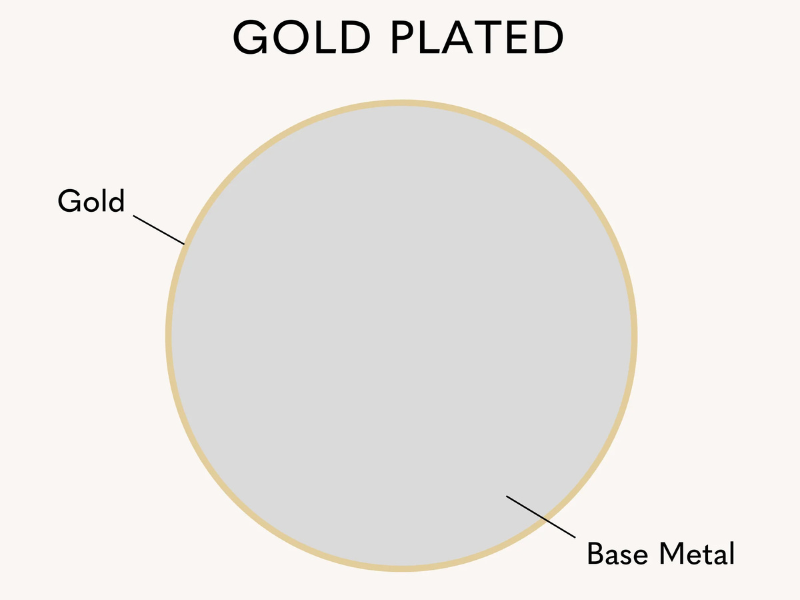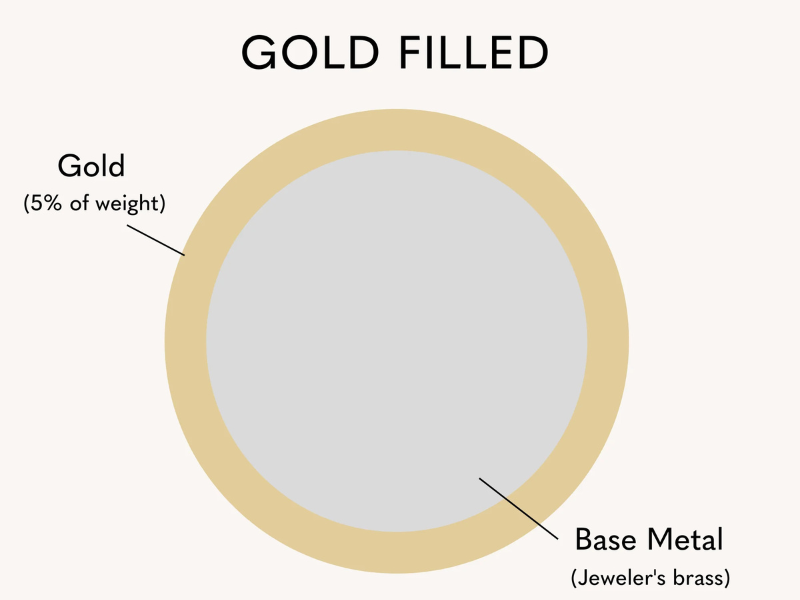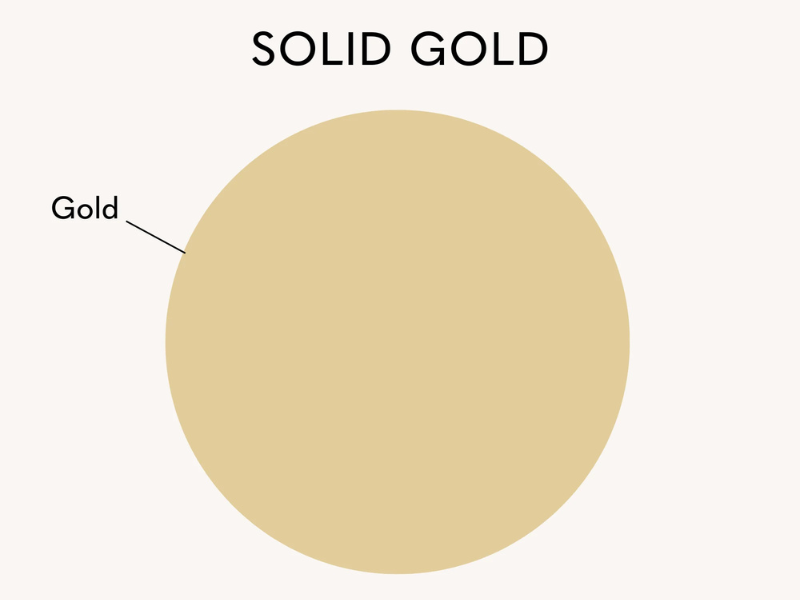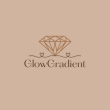Gold plated jewellery refers to item made of a metal that have coated with a thin layer of gold. The metal can be anything like copper, steel, or nickel, and the gold used in plating is of a lower karat value. This type of jewellery offers the aesthetic look of real gold at a low cost, making it an accessible choice for fashion lovers who want the luxurious look of gold without the high price.
Gold plating does not increase the value of the base metal and should not be confused with solid gold. The gold layer can wear, revealing the metal, which may tarnish or cause allergic reactions depending on individual’s skin sensitivity.
How is Gold Plated Jewellery Made?
The process of making gold plated jewellery involves several steps. They are-
- Preparation: The metal is cleaned to remove any dirt, oils, or other contaminants. This step ensures that the gold plating adheres properly to the surface.
- Electrolytic Bath: The cleaned item is merged in a solution containing gold ions. An electric current is then applied to the bath, causing the gold to bond to the surface of the base metal.
- Rinsing and Polishing: Once the plating process is complete, the jewellery is rinse and polished to enhance its shine and finish.
The thickness of the gold layer can typically measured in microns. A thicker coating generally results in longer-lasting plating. However, even the thickest gold plating will eventually wear down with time and use.
How Does Gold Plated Jewellery Last?
The gold plated jewellery depends on several factors, including the thickness of the gold layer, how ever the piece is worn, and how well it is cared for.
- Thickness: Thicker gold layers (2.5 microns or more) will last longer than thinner one.
- Frequency of Use: Daily wear exposes jewellery to more moisture, and chemicals, which can went up the fading process.
- Care and Maintenance: Proper care such as storing pieces in a dry place, avoiding water, lotions, and perfumes—can extend the lifespan of gold plated jewellery.
With proper care, high-quality gold jewellery can last from several months to a few years.
How Do I Tell Whether a Piece of Jewelry is Made of Gold or Gold-Plated?
Determining whether a piece of jewellery is solid gold or gold plated can be tricky, but there are several clues:
Markings and Stamps
One of the easiest ways to determine gold content is by examining any markings or stamps on the piece. Solid gold jewellery will usually be marked with a karat rating, such as:
- 24K (pure gold)
- 18K (75% gold)
- 14K (58.3% gold)
- 10K (41.7% gold)
These markings indicate that the item is not solid gold but has a layer of gold applied to a metal.
Colour Difference
Solid gold has a rich, consistent color that doesn’t tarnish. In contrast, plated jewellery might appear slightly brighter or shinier when its new, but it can lose its lust over time. As the plating off, you might notice a change in color or the appearance of a different metal.
Weight
Gold is heavy metal. If a piece of jewellery feels light for its size, it might be gold plated rather than solid gold. Solid gold items are heavier than their plated counter parts.
Allergic Reaction
Some individuals are allergic to certain base metals like nickel or copper, which are often used in gold plated jewellery. If wearing the piece causes irritation or a greenish on your skin, it is likely not solid gold.
Types of Gold Jewelry
There are 4 types of gold-
Gold Plated Jewellery
As previously discussed, gold plated jewellery consists of a metal coated with a thin layer of gold. It’s an affordable option for those who want the appearance of gold without the cost.
Pros:
- Inexpensive
- Widely available
- Attractive gold
Cons:
- Tarnish and fade
- Can cause allergic reactions
- Not valuable in resale

Gold Vermeil
Gold vermeil is a higher-quality version of gold plated jewellery. To be legally called “vermeil” in many countries, the piece must have a base of silver and a gold layer that is atleast 2.5 microns thick.
Pros:
- Higher quality than standard gold plating
- Hypoallergenic (due to sterling silver base)
- More durable
Cons:
- Still less durable than solid gold
- Can be more expensive than regular gold plated items

Gold Filled
Gold filled jewellery is made by mechanically bonding a thick layer of gold to a metal, usually brass. The gold layer in gold filled jewellery is much thicker than that in gold plated or vermeil items—typically about 5% of the item’s total weight.
Pros:
- More durable and longer-lasting
- Retains appearance longer than gold plating
Cons:
- More expensive than gold plated jewellery
- Not as valuable as solid gold

Solid Gold
Solid gold jewellery is made entirely of gold alloyed with other metals to enhance durability. Pure gold (24K) is soft and not suitable for everyday wear, so most solid gold jewellery is made from 18K, 14K, or 10K gold.
Pros:
- High intrinsic value
- Long-lasting and durable
- Does not tarnish
Cons:
- Expensive
- Can be too soft

